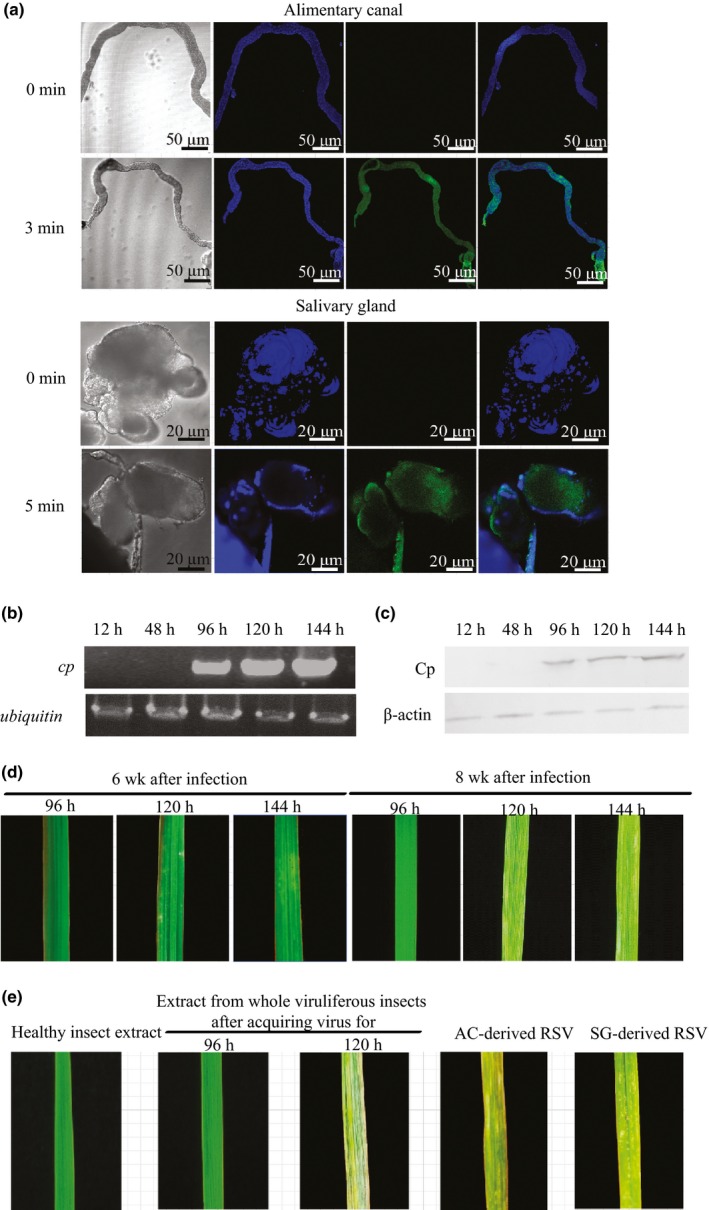Figure 1.

Acquisition, inoculation and pathogenicity of Rice stripe virus (RSV) in the alimentary canal and salivary gland of small brown planthoppers (Laodelphax striatellus). (a) Minimum acquisition access period of RSV in the alimentary canal and salivary gland visualized through immunohistochemistry at 3 or 5 min after small brown planthoppers were fed on the artificial diet containing plant‐derived RSV crude preparations. Green signal is from Alexa Fluor 488‐labeled anti‐Cp monoclonal antibody, and blue signal is the nucleus stained with Hoechst. (b, c) The RNA levels of cp gene and protein levels of Cp in rice leaves (Oryza sativa) inoculated by small brown planthoppers that acquired RSV for 12, 48, 96, 120 or 144 h, viewed via qRT‐PCR and Western blot analysis, respectively. Rice ubiquitin (AK061988) and plant beta‐actin were used as internal controls. (d) Disease symptoms of rice leaves inoculated by small brown planthoppers that acquired RSV for 96, 120 or 144 h after 6 and 8 wk. (e) Disease symptom of rice leaves microinjected with RSV crude preparations from the whole viruliferous planthoppers after acquiring the virus for 96 h or 120 h, or from the salivary glands (SG) or alimentary canals (AC) of the insects after acquiring virus for 120 h. Healthy insect crude extracts served as negative control.
